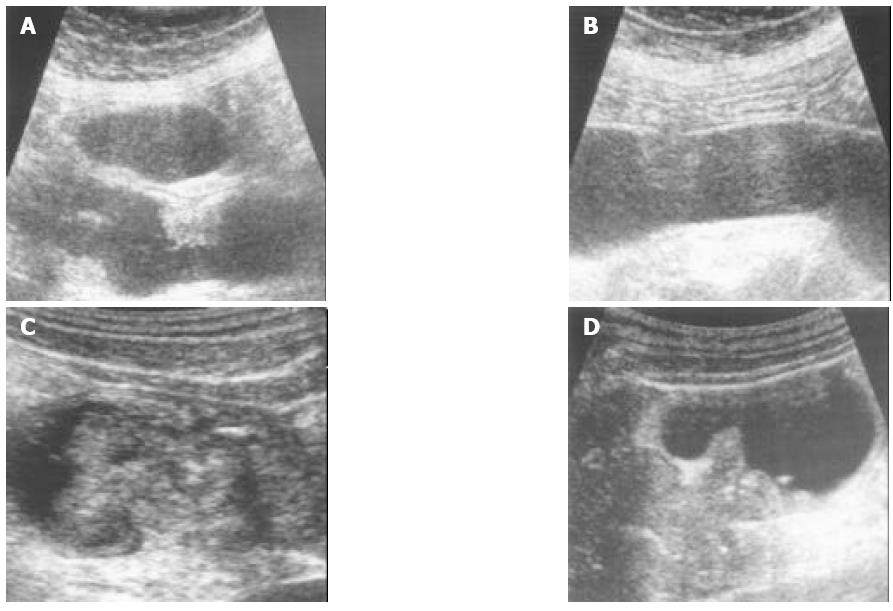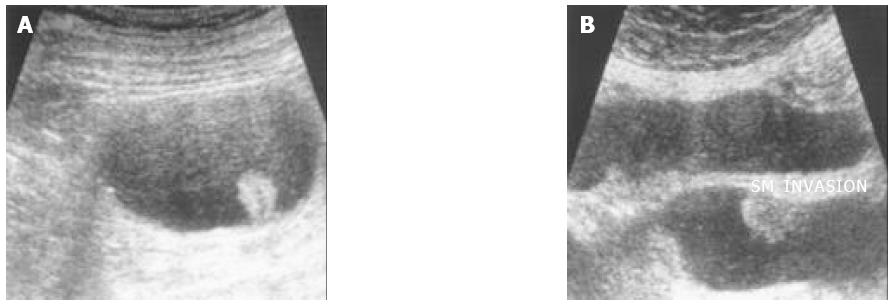Copyright
©The Author(s) 2004.
World J Gastroenterol. Apr 15, 2004; 10(8): 1157-1161
Published online Apr 15, 2004. doi: 10.3748/wjg.v10.i8.1157
Published online Apr 15, 2004. doi: 10.3748/wjg.v10.i8.1157
Figure 1 Normal images of five-layered colorectal wall architec-tures at each site.
A: Distended rectum by instilling 1 000-2 000 mL warm saline inserted with a balloon catheter, B: rectum, C: sigmoid colon, D: descending colon, E: transverse colon, F: ascending colon. The first hyperechoic layer and the 2nd hypoechoic lesion were mucosa, the 3rd hyperechoic layer was submucosa, the 4th hypoechic lesion was muscularis propria, and the 5th outer echogenic layer was serosa (from inner to outer of the lumen).
Figure 2 Images of HUS corresponding with their histological stage A: A round mass originated from submucosal (SM) layer in the descending colon, its histological stage was SM (T1).
B: A round mass with deformed PM layer (T2) in transverse colon, its histological stage was PM (T2). C: A large endoluminal polypoid mass penetrating the wall and extending to pericolic fat layer. HUS judged stage was T3, its histological stage was T3. D: A carcinoma with serosal infiltration extending into pericolic adjacent tissue in descending colon. HUS judged stage was T4, its histological stage was T4.
Figure 3 Images of HUS not corresponding with their histological stage.
A: Sigmoid colon cancer; HUS judged as PM cancer (T2), but histology revealed pericolic fat infiltrated by tumor cells (T3). B: Transverse colon cancer; HUS judged as PM cancer (T2), but histology revealed intact PM layer and tumor cells infiltrated only SM layer (T1).
- Citation: Chung HW, Chung JB, Park SW, Song SY, Kang JK, Park CI. Comparison of hydrocolonic sonograpy accuracy in preoperative staging between colon and rectal cancer. World J Gastroenterol 2004; 10(8): 1157-1161
- URL: https://www.wjgnet.com/1007-9327/full/v10/i8/1157.htm
- DOI: https://dx.doi.org/10.3748/wjg.v10.i8.1157











